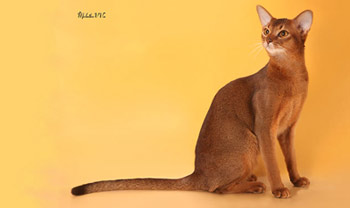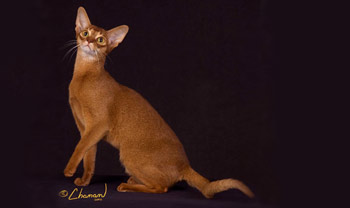

authored by (c) Jeanne Singer


Breeders and exhibitors, alike, please, stop, look and listen in the interest of health and welfare!
What is a standard? It is not a cat. A standard is an abstract aesthetic ideal. The realisation of a good standard would result in a work of art, or at the very least, an object possessing artistic unity. Artistic unity requires that individual parts be in harmony with one another; that they possess balance and proportion; that together they enhance each other and strengthen the whole. A good work of art has it's own inner logic. There is a feeling of inevitability and rightness about each detail. With a standard we aim at some satisfying visual shape that possesses a certain style. Style too, implies an inner harmony and consistency between the parts. In the realm of aesthetics the whole is really greater than the sum of it's parts, but each part enhances or detracts from the whole. It's realisation should possess aesthetic and artistic validity.
Nothing grotesque or distorted or ugly is implicit in the standard. Why then do some winning cats look ugly or distorted? Because they violate in some way the basic concept. A cat can have individual "good" features, and yet not fulfil the ideal standard.
In a poor or amateurish work of art, some parts clash or cannot be harmonised with other parts. There can be much brilliance coupled with abysmal weakness. Artistic unity is impaired or absent. If one analyses any cat that appears "ugly", one will discover that some feature, or combination of features does not blend in well, or abruptly interferes, with the basic overall pattern of lines and planes. In other words, something clashes with the style
Excessive exaggeration, distortion or contradictory parts, create a grotesque instead of pleasing image. Intentionally distorted and exaggerated features can also create a ludicrous or comic effect. Such is the nature of caricature or cartooning. However, the ideal standard does not imply intentional distortion of any one part at the expense of another. There is a delicate balance between that which enhances and that which distorts
The standard does not describe a living cat. It is an artistic ideal that is never completely attained in one specimen. We merely try to approach the ideal, always aware that perfection is beyond our grasp. This is what keeps us inspired, much as an artist is inspired.
Suppose we work backwards on the standard. Instead of starting with details and adding them together to arrive at a whole, let's start with our basic style and evolve the details from the style. One will see that the component parts cannot be slung together in an arbitrary fashion. One does not have the choice of any shaped head or any shaped tail. One must choose the shape that best enhances the basic pattern. A large, round, massive head on a long slender neck would be as obviously grotesque as a thick blunt tail extending from a long graceful back
We must heed nature as far as healthy functioning is concerned.
No standard can or should set down to the last millimetre of a whisker, a scientifically exact diagram of a cat. Nature never produces exact replicas anyway. The standard is an objective and artistic guide to a judge's own good taste and educated sense of proportion. In like manner a composer sets down his notes, tempo dynamics and phrasing as a guide to the interpreting musician, but he must rely on the musician's own sensitivity and knowledge of style to make the music live.
A cat is a living breathing moving being that must be observed as such - not as an inanimate piece of machinery or a frozen corpse. Certain things a good musician never does, such as interpret slow for fast or loud for soft. Likewise a good judge could never interpret coarse for fine or short for long, though these terms be merely relative and not absolute. For example, how long is long and how tall is tall? This is the area in which the art of interpretation operates. Standards are a yardstick by which the breeder may measure his advances towards a perfect feline, by which a judge may compare animals developed according to these guidelines.
The ideal cat is a perfectly proportioned animal, of pleasing appearance and superb refinement, a sophisticated version of a domesticated feline. The whole presentation is pleasant to the eye, well groomed, friendly and manageable, ready for the competition of that day of showing, when the judge goes through the mechanical, the ethical, the artistic and the comparable selection of Bests and Best in Show. If the various parts of the cat are harmoniously balanced and complement each other well, the whole will be greater than the sum of it's parts.
THE TOTAL WILL BE A BEAUTIFUL CAT!